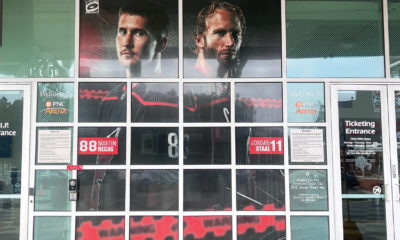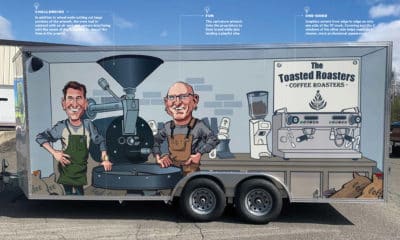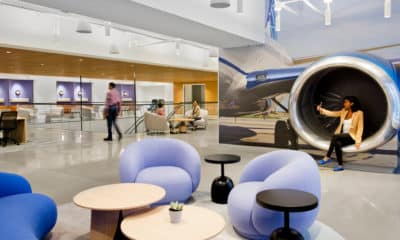PALMER SIGNS (palmersigns.com) IS NO stranger to designing, printing, and installing food trucks. At the time of this interview, the Roseville, California, shop had just completed their 100th mobile restaurant wrap.
“Everyone in the food truck business wants to compete, and they always want to one-up their neighbor with a unique design,” says Tony Palmer, owner, Palmer Signs. “It’s fun competition between the food trucks.” The shop recently completed a wrap for a customer in Hawaii, but their usual customers are in Northern and Southern California, a haven for meals on wheels.
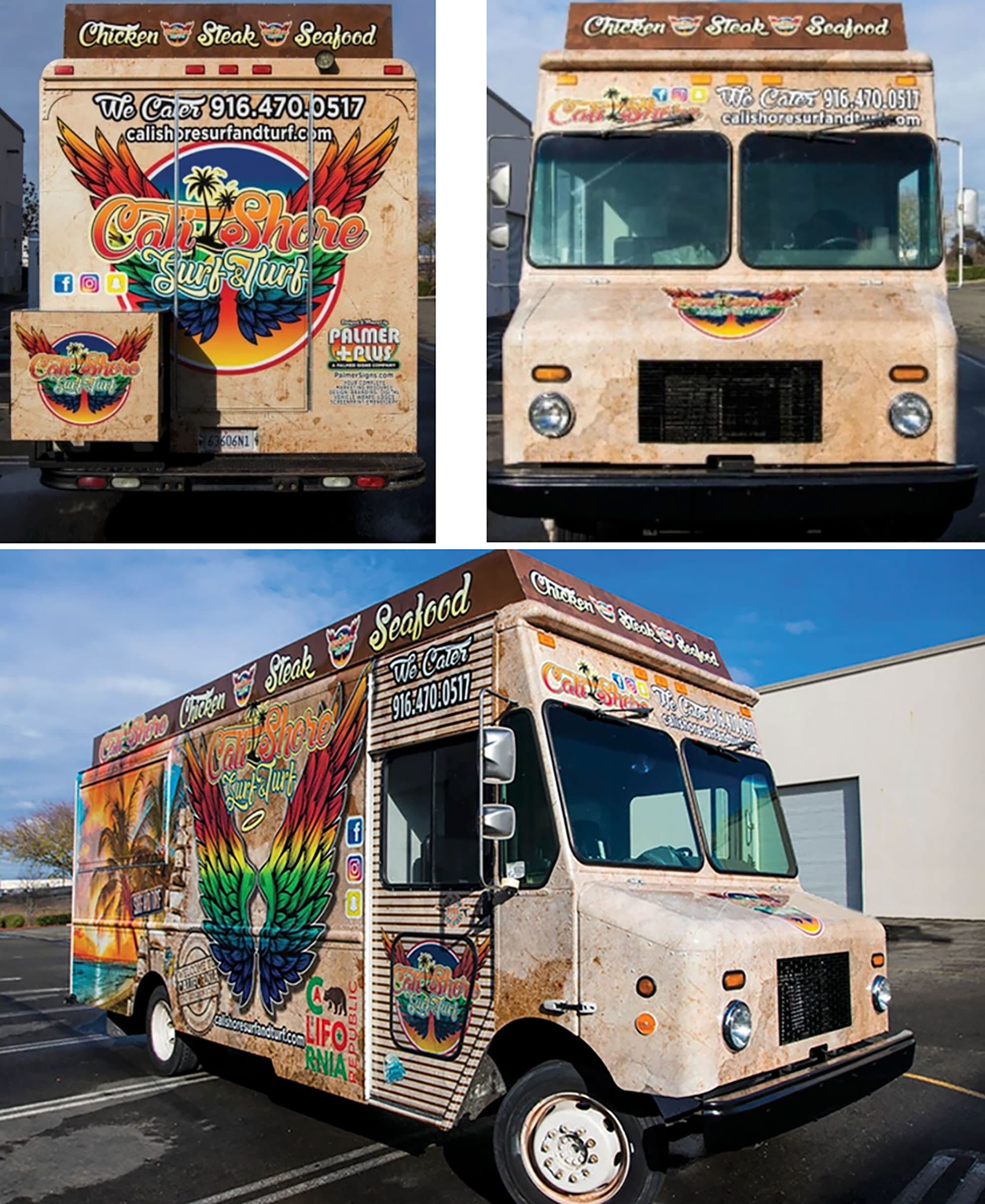
Equipment and Supplies Used
Equipment
- HP 570 latex printer
- GFP 563TH laminator
Media
- 3M Ij180c V3
- 3M 8518 gloss laminate
Software
Advertisement
- 2020 Photoshop
- SAi Flexi RIP
Square Feet of Material
Palmer Signs is competing, too. In order to stand out from other PSPs, the shop places their own logo on the back of the wrapped food truck. “If you let us place our 2 x 2-foot logo, we will discount the overall price by $250,” says Palmer. “So, most of them do that because they’re on a shoestring budget.” Out of 100 food trucks, maybe 10 have said “no” to having the shop’s logo on their vehicle, says Palmer, and those are typically corporate companies with specific rules for the overall design. “All of the local trucks have the logo on the back,” he continues.
But it’s not all street tacos and barbecue slider designs for the print shop. Designing for food trucks requires the whole enchilada. Palmer Signs, made up of 15 employees, also offers electrical signs, vehicle wraps, logo and brand design, embroidery and screen printing, and business collateral. Their customers range from business owners to car enthusiasts.
“There’s a knack to putting the design together,” says Palmer. He suggests becoming educated in the food truck business before diving in. His go-to guru? Paul Somerhausen of Sacramento Mobile Food (SactoMoFo), a full-service gourmet mobile food catering and event planning company that has produced more than 5000 events in Northern California since 2011. Somerhausen is known for leading seminars for the food truck industry. He covers what it takes to get into the market including the specific speed that’s necessary for the truck, insurance needs, and health department regulations. Palmer Signs is then brought in to share the importance of design. “You could have the best food in the world, but unless you have a cool wrap, you won’t have customers,” says Palmer.
The main challenge with designing a food truck is the owner’s emotional investment in the business. “They come with this dream,” Palmer says. “We have to take what their essence is and translate it into a design that’s functional. They say, ‘I want to do this, this, and this,’ and we have to tell them, ‘OK, easy killer.’ We have to have them slow down.”
The Cali Shore Surf and Turf wrap Palmer completed last December was even more daunting than usual. The eatery is owned by Edgar Gomez, owner of Gomez Repairs, a local food truck and trailer repair shop. “This is his own food truck, his own prized possession, and he let us do it, which means a lot,” says Palmer.
Advertisement
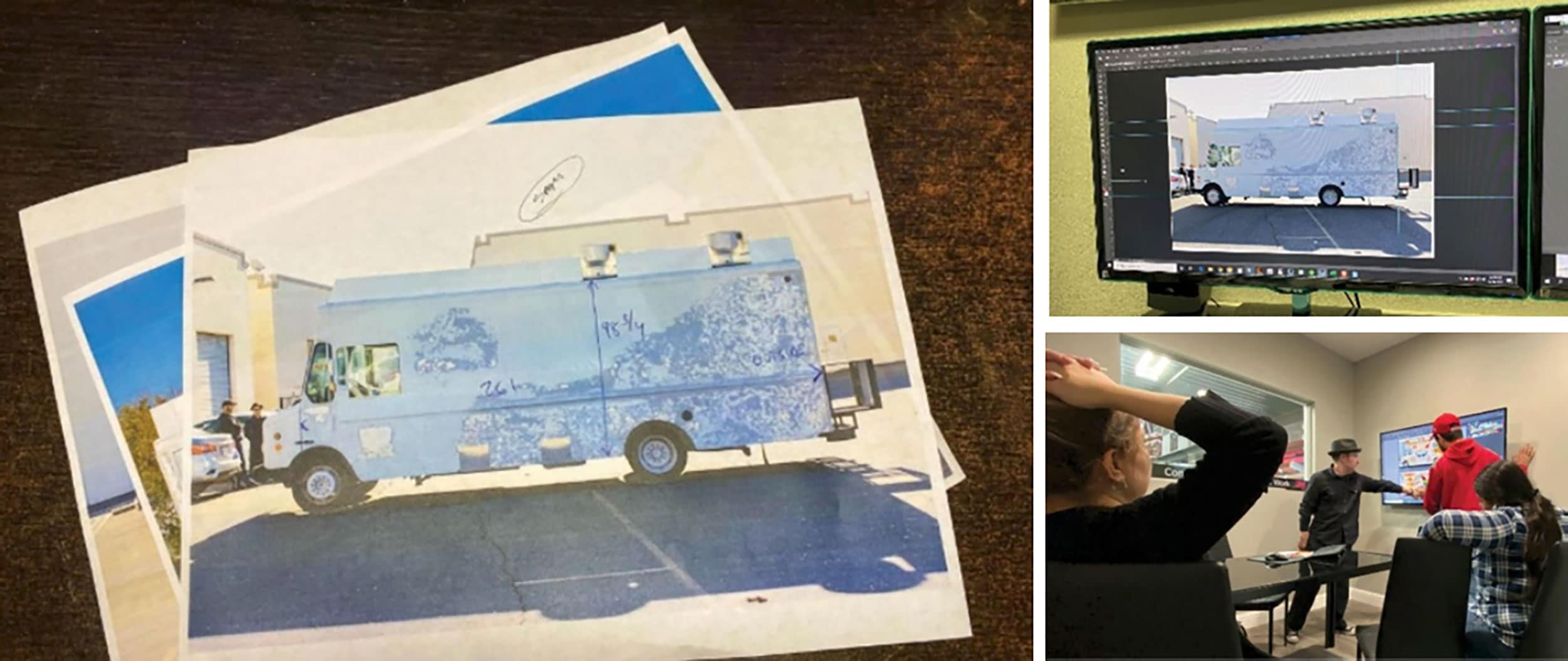
1. Design
The very first thing Palmer Signs does is bring the food truck to their 9000-square-foot facility and measure “because every truck is unique – not one is alike,” says Palmer. They take pictures, look at the truck’s condition, measure it in square footage, and create the template. “Then we give them their price right at the get go.” Palmer says he does this because the shop will get so far into the prep, design, and print and then the customer will try to negotiate. “It’s better to do it right up front,” he says.
After checking the truck and confirming price, they meet with the owners to discuss the food being served, what makes the restaurant on wheels unique, if the recipes come from the family, the origin (Venezuelan, in this case), and something they love about their country. “We really get deep into their history because when we create the wrap, we bring in those elements,” Palmer says. “It gives the owner a lot of pride and excitement and makes us different from other sign shops. We’ll invest time and listen to their story – it’s our favorite part.”
Cali Shore Surf and Turf is owned by Gomez’ family so there were many cooks in the design kitchen. “The customers were all over the board, back and forth,” says Palmer. “The team would finalize and Gomez would come in and change it all.” They would ask what happened and Palmer would have to tell them that the guy writing the checks wanted a change.
A major design challenge that arose in the beginning stages was thanks to a picture of the ocean the Gomez family loved. “They wanted to make all the colors on the truck stark, except for the wings,” says Palmer, “but then you start teaching them about composition and contrast, and without it everything washes it out, so where’s your focal point?” But they still loved the picture. So, in Photoshop, Palmer Signs manipulated the image to include a blue background “and the whole world fell into place. The designer was back and forth with them and then it was done,” says Palmer. “It’s fun, but it’s a challenge, especially when you’re trying to get all these people to agree on their life’s dream.”

Advertisement
Once the concept is created, the team makes a few renditions of the designs at 75 percent completed with a couple of proofs. They then bring the customer back into the shop and finish the design with them there in person. “To shift or change color or move something one inch with them there is much easier,” says Palmer. In this case, the son and son-in-law were at the shop with Gomez FaceTiming in. Justin Lee, Palmer Signs designer, then works with the clients while Palmer is there to reiterate the importance of certain design elements. “At the end of the day, we want them to be successful,” says Palmer.
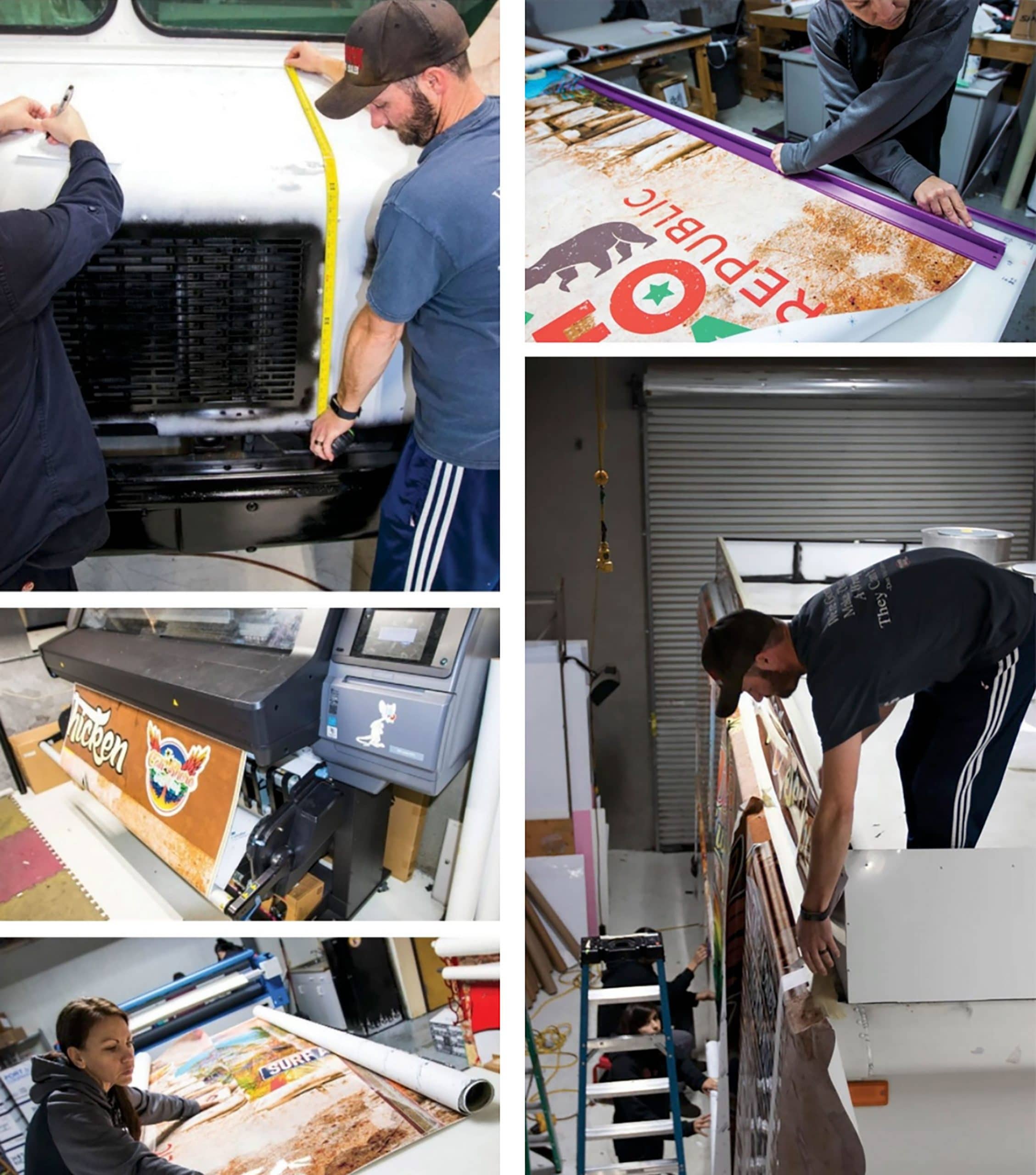
2. Prep and Production
Once the design has been approved by all parties, the shop prints out a full-color proof on wrap material and laminate. “The printout is more vibrant than what you’re going to see on the monitor,” says Palmer. The customer signs off on it, then it’s sent to production. The team cleans the truck, wipes everything down with isopropyl alcohol, begins the degreasing process – “food trucks are notorious for being extremely dirty,” says Palmer – and removes door handles, mirrors, lights, and speakers.
The shop then prints the wrap in a vertical format like wallpaper. They pre-assemble the panels ahead of time and then tape them on the side of the truck as one giant panel. “It allows us to keep alignment,” says Palmer. “We have 15 employees in the shop. Three or four at a time set the panels, and then one employee will adhere each panel on one whole side.”
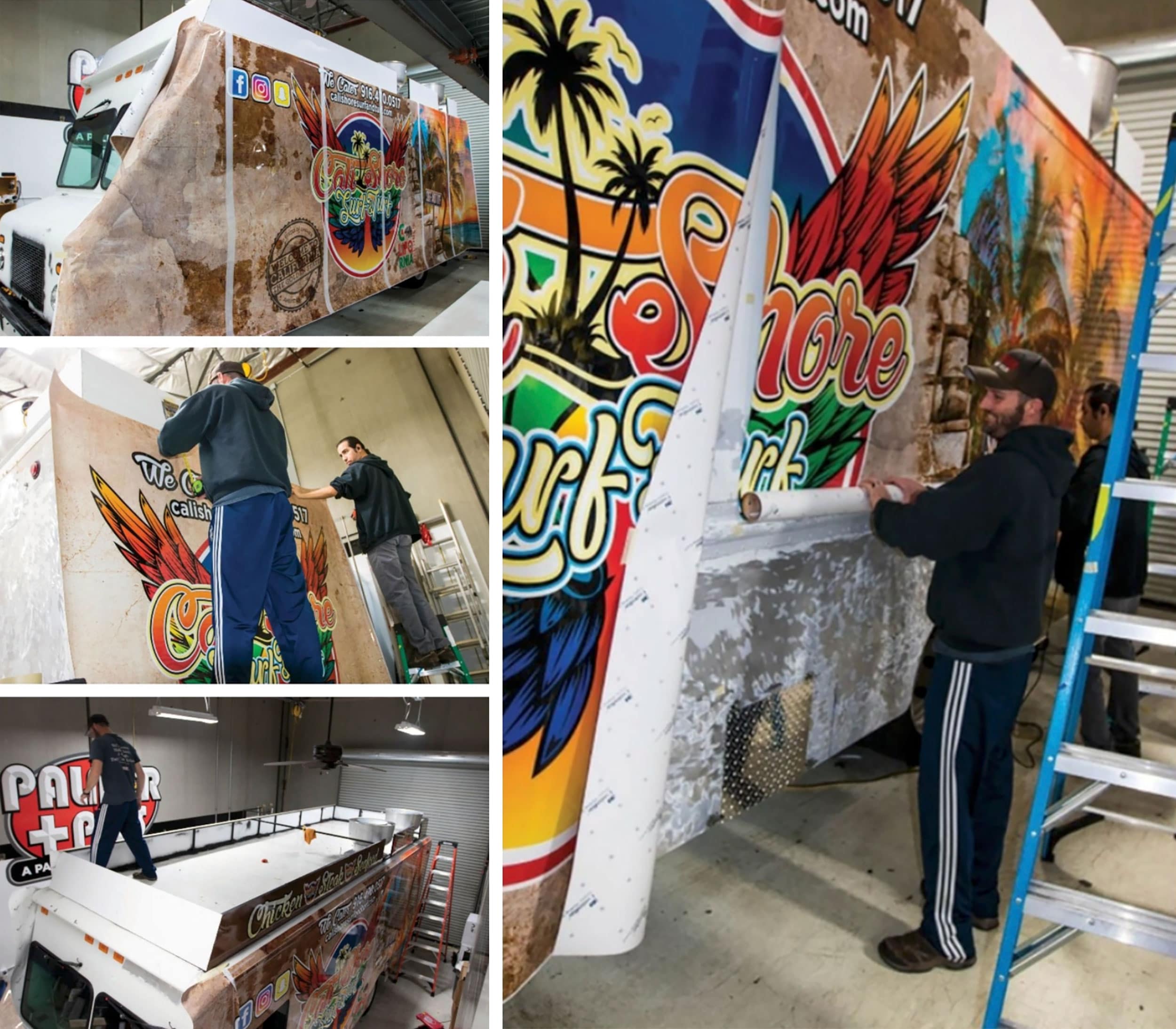
Palmer Signs then makes sure everything is detailed. The team does a walk around the truck to make sure all the areas are final. They’ll add a gloss or matte to any recessed areas and then wash, clean, and wipe down everything. They then take high-resolution photos with an “expensive” camera and lens and “it makes all the difference in the world because social media is how customers see your work.” They sometimes even create videos. “It’s great for the client because they’re promoting and then you’re promoting yourself,” says Palmer.
The final step: the walkaround with the client. “They were beyond ecstatic,” says Palmer. “Edgar said, ‘This truck is the most unique food truck in our area,’ and he was excited about that, and it made me feel good coming from someone literally in the business. It’s what he wanted, and we were able to capture that – to me, that’s success.”
But what if there are changes from the client once the wrap has been installed? “It depends on what it is,” says Palmer. “I make a joke about it. I tell them the time to look at things is in design, not when it’s on the side of the truck because we can fix it here, not later.”
Palmer says food trucks aren’t a money-maker for the business because they take a lot of time. “A food truck costs $5000-6000, but I could print and install four vehicles for $2400 bucks a piece in the same amount of time. We do them because they’re giant moving billboards for us.” With the attention to design detail and traveling ads all over Cali, Palmer Signs just might hit 200 food trucks by the end of 2020.


 Best of Wide Format2 months ago
Best of Wide Format2 months ago
 Best of Wide Format2 months ago
Best of Wide Format2 months ago
 Blue Print3 weeks ago
Blue Print3 weeks ago
 Best of Wide Format2 months ago
Best of Wide Format2 months ago
 Best of Wide Format2 months ago
Best of Wide Format2 months ago
 Best of Wide Format2 months ago
Best of Wide Format2 months ago
 Best of Wide Format2 months ago
Best of Wide Format2 months ago
 Best of Wide Format2 months ago
Best of Wide Format2 months ago





